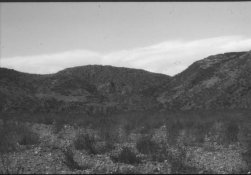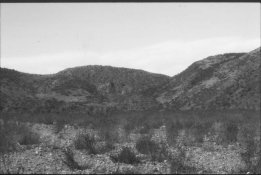I'll buy almost anything under $20, I even have a pet rock who hasn't shown any interest in photography after all these years.
So I bought 20 rolls of RPC for $20. Expiration date 1991, what's a couple of decades. I went out and shot one roll, but only a couple of photo's show any detail and they are rather like film noir.Since it said Rapid Process I developed in HC110 1:50 for 7 minutes and they are to my suprise positives, though the sky had the only detail. It was Sunny16 light and the two I shot that came out were about 5 seconds at f1.4 on a 50mm lens. The developer, fix, etc. was good as I used the same chemicals to develop a roll of Pan F Plus right after and it came out fine.
I suspect that Very Slow in the film description is something I don't quite comprehend. I would think it is at least 5 stops slower than my light meter at ISO6. Maybe open the shutter and sing the Jeopardy song and then close it or carry a stopwatch, how do you do really long exposures.
Any suggestions, speculations? More time - More Development?
I've found all the old threads and they helped for a start, but no one ever posted if they got results.
So I bought 20 rolls of RPC for $20. Expiration date 1991, what's a couple of decades. I went out and shot one roll, but only a couple of photo's show any detail and they are rather like film noir.Since it said Rapid Process I developed in HC110 1:50 for 7 minutes and they are to my suprise positives, though the sky had the only detail. It was Sunny16 light and the two I shot that came out were about 5 seconds at f1.4 on a 50mm lens. The developer, fix, etc. was good as I used the same chemicals to develop a roll of Pan F Plus right after and it came out fine.
I suspect that Very Slow in the film description is something I don't quite comprehend. I would think it is at least 5 stops slower than my light meter at ISO6. Maybe open the shutter and sing the Jeopardy song and then close it or carry a stopwatch, how do you do really long exposures.
Any suggestions, speculations? More time - More Development?
I've found all the old threads and they helped for a start, but no one ever posted if they got results.





